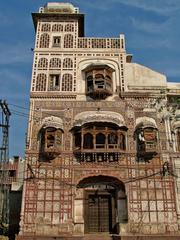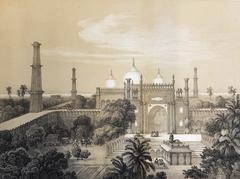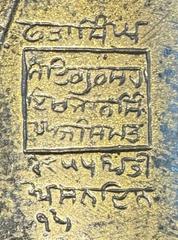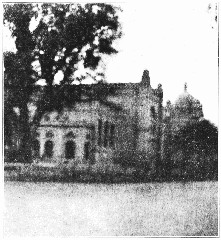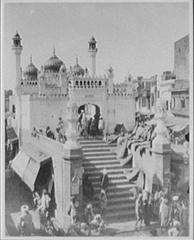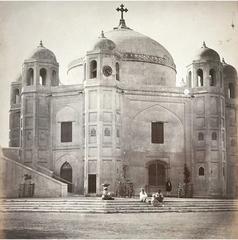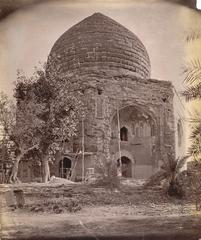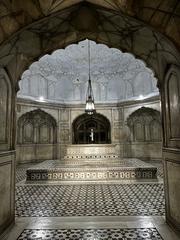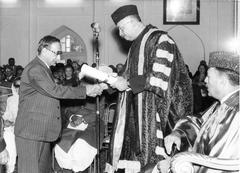
Hazuri Bagh Baradari: Visiting Hours, Tickets, and Travel Guide in Lahore, Pakistan
Date: 03/07/2025
Introduction
Hazuri Bagh Baradari, an exquisite marble pavilion at the core of Lahore’s vibrant old city, stands as a testament to the city’s layered history, artistic achievement, and cultural pluralism. Commissioned by Maharaja Ranjit Singh in the early 19th century to commemorate his acquisition of the famed Koh-i-Noor diamond, this structure is a brilliant blend of Sikh, Mughal, and Persian influences, encapsulated in its elegant white marble walls and intricate ornamentation (Wikipedia; TravelSetu). Surrounded by landmarks such as the Lahore Fort, Badshahi Mosque, and the Samadhi of Ranjit Singh, Hazuri Bagh Baradari is both a focal point of Lahore’s architectural heritage and a living space for cultural gatherings, making it a must-visit for history lovers, architecture enthusiasts, and cultural travelers alike.
Historical Background
Origins and Construction
Hazuri Bagh Baradari was constructed in 1813 under the orders of Maharaja Ranjit Singh to mark his possession of the Koh-i-Noor diamond (Wikipedia). The garden’s layout follows the Mughal charbagh (four-part garden) tradition, with the Baradari at its center. Supervised by Faqir Azizuddin and constructed by Khalifa Nooruddin, the pavilion utilized marble reclaimed from Mughal-era mausoleums in Lahore (Lahore City History). Its original design featured two storeys and a basement, with 15 steps leading to a spacious square main hall, famed for its mirror ceiling and marble pillars.
Historical Events and Transformations
- Sikh Era: The Baradari served as a royal court where Ranjit Singh held audiences, dispensed justice, and hosted cultural events. Its open-plan design, with twelve doors (bara-dari), symbolized accessibility and transparency in governance (TravelSetu).
- Conflicts: The pavilion suffered significant damage during the Sikh wars, notably the 1841 siege, when artillery fire destroyed parts of the basement and staircase (Dawn).
- Colonial Period: Under British rule, Hazuri Bagh became a leisure ground, with the Baradari hosting band performances and public gatherings. The Treaty of Lahore, marking the end of the First Anglo-Sikh War, was signed here in 1846 (Pakistan Traveler).
- Natural Disasters: An earthquake in 1932 caused the collapse of the upper storey, leaving the Baradari as a single-storey structure today (Dawn). Restoration and preservation efforts continue under governmental and community initiatives.
Architectural Features and Setting
Hazuri Bagh Baradari showcases a harmonious fusion of Sikh and Mughal architectural vocabulary. The pavilion’s twelve-door design facilitates cross-ventilation and panoramic views. Constructed entirely from white marble, it contrasts with the red sandstone of surrounding monuments. Delicate relief carvings, marble jali screens, and a mirrored ceiling (ayina kari) exemplify the region’s masterful craftsmanship (Traveler Trails). The symmetrical charbagh layout emphasizes axial sightlines, linking the Baradari to the Lahore Fort and Badshahi Mosque (Guide to Pakistan).
Cultural and Social Significance
Hazuri Bagh Baradari has long been a nucleus for public life in Lahore:
- Royal and Public Gatherings: It served as a venue for poetry recitals, musical performances, and courtly functions during the Sikh era (The Friday Times).
- Cultural Festivals: The site continues to host literary events, music concerts, and heritage walks, reinforcing its role in Lahore’s communal identity (Dawn).
- Interfaith and Urban Symbolism: Its central location and use of materials from Mughal monuments signify Lahore’s tradition of religious and cultural pluralism (SikhNet).
Visiting Information
Hours and Tickets
- Opening Hours: Daily from 8:00 AM to 7:00 PM.
- Entry Fee: Free for locals; international visitors may pay a nominal fee. Check for updates on official tourism websites (TravelSetu).
- Peak Times: October to March, with mornings and late afternoons offering the best light and comfort.
Accessibility
- Access Points: Located near Lahore Fort and Badshahi Mosque; easily reached by rickshaw, taxi, or public transport.
- Facilities: Wheelchair-accessible paths are present, but some uneven surfaces remain. Assistance is available upon request.
Guided Tours and Activities
- Guided Tours: Local operators offer historical tours, often as part of broader Lahore heritage packages.
- Photography: The Baradari’s architecture and garden vistas are ideal for photography. Flash is discouraged inside.
- Workshops and Events: Occasional art and craft workshops, yoga sessions, and cultural performances enliven the space (Traveler Trails).
Nearby Attractions
- Lahore Fort
- Badshahi Mosque
- Samadhi of Ranjit Singh
- Walled City of Lahore
- Lahore Museum
- Shalimar Gardens
Combine your visit to Hazuri Bagh Baradari with these sites for a comprehensive historical experience.
Preservation and Community Engagement
Despite challenges from urbanization and environmental exposure, Hazuri Bagh Baradari remains well-preserved thanks to initiatives by the Punjab Archaeology Department and local NGOs. Community-led heritage walks and clean-up campaigns underscore local stewardship (Audiala). Digital platforms and virtual tours are enhancing public engagement and awareness (Vouch365).
Frequently Asked Questions (FAQs)
Q: What are the visiting hours for Hazuri Bagh Baradari?
A: Open daily from 8:00 AM to 7:00 PM.
Q: Is there an entry fee?
A: Free for local visitors; nominal fee for international tourists.
Q: Are guided tours available?
A: Yes, through local operators and sometimes onsite.
Q: Is the site accessible to people with disabilities?
A: The garden is largely accessible, though some surfaces may be uneven.
Q: What events are held at Hazuri Bagh?
A: Cultural performances, art workshops, yoga, and heritage festivals are regularly hosted.
Q: What sites are nearby?
A: Lahore Fort, Badshahi Mosque, Samadhi of Ranjit Singh, and Walled City of Lahore.
Conclusion and Call to Action
Hazuri Bagh Baradari is more than a monument—it is a living symbol of Lahore’s historic grandeur, architectural innovation, and cultural vibrancy. Its central location, free or affordable access, and rich program of events make it a highlight of any visit to the city. Plan your visit during the cooler months, explore the surrounding landmarks, and immerse yourself in the dynamic history and culture of Lahore.
For official updates, including event schedules and accessibility, visit the Lahore Tourism Development Corporation and Punjab Heritage & Tourism Society. For virtual tours, travel tips, and curated experiences, explore the Audiala app and our related articles on Lahore’s historical sites.
References
- Hazuri Bagh Baradari - Wikipedia
- Visiting Hazuri Bagh Baradari in Lahore: History, Tickets, and Travel Tips - TravelSetu
- Lahore as it once was: Hazuri Bagh and the Baradari - The Friday Times
- Hazuri Bagh Baradari: Visiting Hours, Tickets, and Historical Significance in Lahore - Guide to Pakistan
- Hazuri Bagh Baradari: History and Architecture - Traveler Trails
- Hazuri Bagh Baradari and Lahore Heritage - Dawn
- Hazuri Bagh Baradari Cultural and Social Significance - SikhNet
- Hazuri Bagh Baradari Preservation and Tourism - Audiala
- Lahore Heritage Tour - Vouch365
- Hazuri Bagh: Historical Overview - Lahore City History
- Hazuri Bagh Baradari Architecture and Legacy - EAA

